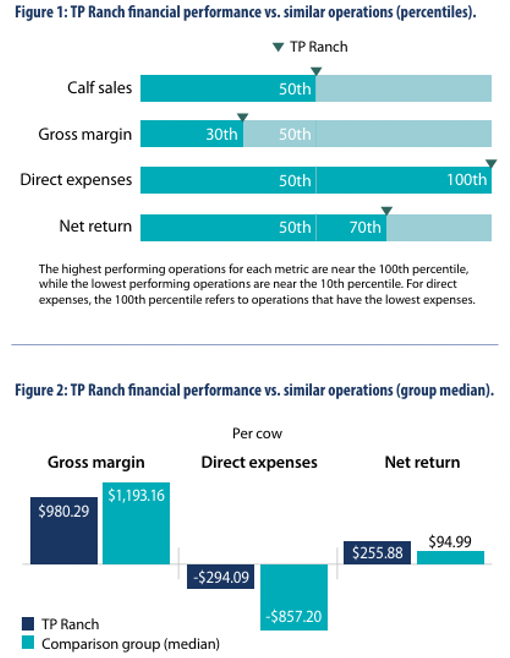Regenerative Agriculture Case Study at TP Ranch
- pua805
- Aug 19
- 4 min read

Applying traditional ecological knowledge with regenerative agriculture to achieve sustainability
Since returning to TP Ranch after pursuing a career off the reservation, Northern Cheyenne rancher April Martin has been dedicated to revitalizing her family’s land, using regenerative agriculture techniques informed by cultural values and land stewardship practices passed down from generations.
April now manages 580 acres of native grass pasture, 80 of which are leased, along with a 70-head cow-calf herd. April’s commitment to restoring soil health, improving biodiversity, and achieving long-term financial sustainability is at the heart of TP Ranch.
"Regenerative agriculture, to me, is about caring for the land in a way that brings it back to health while respecting the traditions and knowledge passed down through my family."
April Martin, TP Ranch
Overcoming Challenges with Regenerative Solutions
April’s interest in regenerative agriculture began in childhood, observing and respecting the land alongside her grandfather. This early connection to the land inspired her passion for sustainable ranching and her understanding of how healthy ecosystems support productive livestock.

About TP Ranch
Location: Northern Cheyenne Reservation, Montana
Owner: April Martin
Years of Experience: 20
Livestock:
70 cow-calf pairs
Grazing 580 acres
Seasonal retention of 20 heifers for herd replacement and genetic improvement
Forages & Grazing Systems:
Managed grazing on five diverse pastures, averaging 100 acres
Native grasses supplemented by cover crops
Adaptive grazing approaches: bale grazing, native grass seeding, cover crops, soil and forage sampling, and strategic mineral placement
Conservation Goals:
Improve soil health
Support biodiversity
Increase resilience through regenerative practices
Managing a ranch comes with financial and environmental hurdles. April’s ranch has been impacted by encroaching invasive weeds, such as sulfur cinquefoil which has increasingly affected livestock over the past few decades. To manage these challenges, April has implemented regenerative practices like strategic bale grazing to reduce weed pressure, enriching the soil with organic matter, and evenly distributing manure to improve soil fertility. April is working to control cinquefoil without herbicides by using rotational grazing systems. These systems, which mimic natural grazing patterns of big game, help maximize pasture use. She also relies on soil testing to guide nutrient management decisions.
Like with many agricultural operations across the western United States, April must navigate rising property insurance and operational costs while remaining focused on implementing sustainable practices. The cost of temporary electric fencing and limited access to affordable financing have presented challenges, but April continues to seek ways to care for the land in alignment with her traditional values.
Measurable Impact Through Regenerative Strategies and Partnerships
To strengthen her operation, April connected with the Intertribal Agriculture Council (IAC), gaining access to valuable tools such as soil testing, financial planning resources, and USDA technical assistance that have helped her make informed decisions about land management and operational costs. She’s also exploring partnerships with tribal forestry to manage invasive species and mitigate wildfire risks.

These efforts are already yielding both environmental and financial improvements:
Soil health improvements: Soil tests taken in 2024 show organic matter levels exceed the average for her soil type.
Biodiversity improvements: There’s been a noticeable increase in pollinators and earthworm activity.
Financial improvements: Her net return per cow ranks in the 70th percentile among similar operations (Figures 1,2).1 April’s strategic grazing approach has reduced her feed costs to $26.23 per cow, far below the $601.40 median for similar operations.
To further support her ranch’s profitability, April is exploring diversified revenue streams, such as selling beef directly to consumers through a ranch-to-table approach and introducing niche products like grass-fed beef.
The Bottom Line
TP Ranch demonstrates the importance of adaptability and pairing regenerative agricultural practices with traditional knowledge. By keeping direct expenses low and prioritizing soil health, April is building a ranch that’s both financially and environmentally resilient.
"I hope my work shows my daughters the importance of caring for the land and how all parts of the ecosystem—from grasses to livestock—are connected."
April Martin, TP Ranch
Measuring the Financial Impact of Regenerative Agriculture on Native Ranches
April is one of 13 ranchers participating in a three-year research project led by the Environmental Defense Fund and the Intertribal Agriculture Council. Launched in 2022, the project collects multi-year data to assess the financial impact of conservation practices on grazing operations in Montana, Nebraska, Nevada, and South Dakota.
While regenerative agriculture's environmental benefits are well-documented, this initiative aims to expand awareness of its financial impact on ranch profitability. The project’s ultimate goal is to identify financing solutions that support Native ranchers in improving both stewardship and financial success.
1 Producers participating in the project are working with Farm Business Management instructors on financial record keeping, benchmarking and analysis. TP Ranch’s whole farm financial metrics were compared to two benchmarks of similar ranches in Minnesota, North Dakota, and South Dakota in the FINBIN database: 1) Beef producers who have 75% of revenue from beef enterprises and farm less than 1000 acres. 2) Farms in the database with less than $500,000 of gross income. Cow-calf enterprises were compared to all beef cow calf producers in Minnesota, North Dakota, and South Dakota in the FINBIN database. The figures are based on data from 2023.



